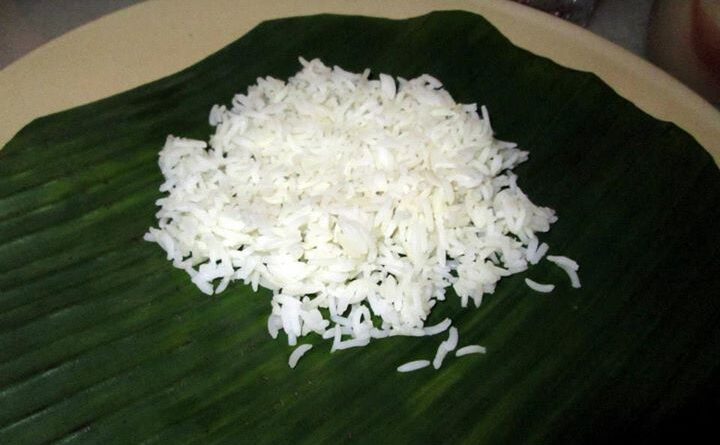How new grading rules for non-Basmati rice varieties can put Gobindabhog on world map
By Atri Mehta
A set of proposed rules for grading rice will soon pave the way for a separate identity for five aromatic varieties from West Bengal and put them on the world map.
According to West Bengal Agriculture Marketing Department officials, the Centre is gearing to roll out a new export group called the ‘aromatic non-Basmati category’ under the ‘Grading and Marking Rule 2023’.
A senior official of the agriculture marketing department said, “We had to export our indigenous aromatic varieties like Gobindabhog and Tulaipanji under the Basmati rice category. However, these varieties do not match Basmati’s characteristics. For years, we demanded a separate category for the export of such indigenous categories of rice…Now, the Centre has agreed to create a category called the ‘aromatic non-Basmati category’. Already, draft rules for the proposed category have been made and we are expecting them to be finalised in a few weeks.”
According to the agriculture marketing department, the state plans to export five indigenous aromatic rice varieties – Gobindabhog, Tulaipanji, Randhuni Pagol, Kataribhog and Kalonunia — under the proposed ‘aromatic non-Basmati category’.
Till now, Basmati is the only rice variety in India with a separate ‘Harmonised System Nomenclature (HSN)’ code for export purposes. The HSN code was introduced by the World Customs Organisation (WCO) in 1988 for the systematic classification of goods across the world. India has also adopted the system. The official also said that indigenous rice varieties like Gobindabhog, Tulaipanji, Radhatilak, Randhuni Pagol, Kataribhog, Kalonunia, Badshabhog and Harinakhuri have huge export potential but a lot of people don’t know about them as they are exported under the Basmati rice category.
“Indigenous categories have individual features which are not the same as Basmati rice. Now, a separate identity will boost their export potential and benefit farmers of West Bengal,” the official added.
“The new grading and marking rules will not only benefit Bengal but also the entire country because almost every rice-producing state has its own indigenous aromatic rice variety which is not the same as Basmati.”
In November, the marketing and inspection division of the Department of Agriculture and Farmers’ Welfare recently wrote to state agriculture department mentioning that: “The ‘Grading and Marking Rule 2023′ for the non-Basmati aromatic rice will be drafted very soon…It is requested that the non-Basmati aromatic rice Grading and Marking rules, 2023 be examined for suggestion/comment. If any, they may be sent to the office within 45 days from the publication of the notification.”
“We got the letter in the last week of November after the draft rules were published. We have already sent necessary suggestions and also applied for grading and marking for Gobindabhog as the first variety under the non-Basmati rice category. Once it is approved, we will gradually apply for other four aromatic rice categories for export grading. We are expecting that from 2024 we will be able to export these in the aromatic non-Basmati rice category,” said another Bengal agriculture department official.
“We have been working with Bidhan Chandra Krishi University for years to develop such categories for export purposes,” the official said.
Talking to The Indian Express, West Bengal Agricultural Marketing minister Becharam Manna said, “We are very happy that these aromatic rice varieties will get a separate entity for export. It will help our farmers most. The development is a result of our Chief Minister Mamata Banerjee’s efforts who is always thinking about farmers’ welfare.”
A speciality of Purba Bardhman, Birbhum and Bankura districts of Bengal, Gobindabhog got the geographical indication (GI) status from the Centre in 2017.
According to Kolkata-based historian Debasis Bose, historically Gobindabhog has always been associated with the high-income classes.
“Nagendranath Seth, a chronicler of Seth -Basak community of Kolkata, mentioned in his ‘Kolikatastha Tantuvanik Jatir Itihas’ that the high-quality rice was offered as ‘bhog’ to their deity Govindji. Hence, it came to be known as ‘Gobindabhog.’ Bengali writer Dinabandhu Mitra in his ‘Suradhuni Kavya’ described ‘Gobindabhog’ as a costly rice variety sold in certain areas of Burdwan region,” Bose added.
Former agriculture officer, West Bengal government, Anupam Paul said, “Gobindabhog is a popular aromatic rice from Bengal. Every year more than 65,000 hectare land in the state is used for Gobindabhog harvesting.”
“If Gobindabhog gets separate marking and grading, it will help its export. However, I am not sure how farmers will profit from the exercise. Another concern is that Gobindabhog is now chemically grown in Bengal, which might not help with promoting exports,” he added.
This article has been republished from The Indian Express.

